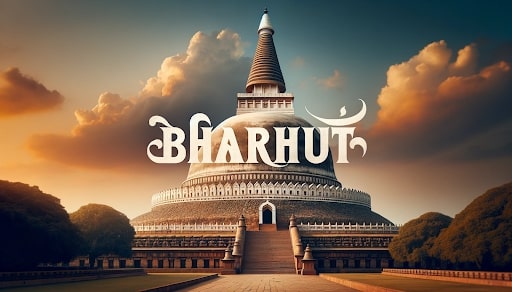
Introduction to Bharhut
Bharhut is a village in the Satna district of Madhya Pradesh, India. It’s famous for its ancient Buddhist stupa, a sacred type of building. This stupa is a window into India’s past, especially the time when Buddhism was spreading.
History of Bharhut
The Bharhut stupa was likely built during the reign of Emperor Ashoka, who ruled from 268 to 232 BCE. This was a time when Buddhism was becoming popular in India. The stupa was later enhanced during the Shunga dynasty, which shows how important it was for a long time.
|
Period |
Contribution |
Significance |
|
Mauryan Era |
Built by Ashoka |
Shows the spread of Buddhism |
|
Shunga Dynasty |
Enhancements made |
Reflects continued reverence |
Architectural Significance
The Bharhut stupa is known for its unique features. It had a circular railing and four gateways, which were not just for show; they told stories from Buddha’s life. These designs were influenced by art from Greece and the Gandhara region, which is now in Pakistan.
|
Feature |
Design |
Influence |
|
Railings |
Carvings of life stories |
Hellenistic and Gandhara styles |
Cultural Heritage
The Bharhut stupa is like a book in stone. It has carvings with labels in the Brahmi script, one of the oldest in India. These carvings show scenes from Buddha’s life and help us understand how people back then practiced Buddhism.
|
Carving |
Script |
Importance |
|
Life scenes |
Brahmi |
Offers insights into ancient Buddhist practices |
Excavations and Discoveries
Alexander Cunningham, a British archaeologist, dug up the Bharhut stupa in the 19th century. Many pieces from the stupa are now in museums, like the Indian Museum in Kolkata. These pieces help us learn about the art and beliefs of ancient India.
|
Archaeologist |
Year |
Outcome |
|
Alexander Cunningham |
19th century |
Artifacts now teach us about ancient Indian art and religion |
Bharhut Today
Today, Bharhut is not just a historical site; it’s a living village. While the ancient stupa tells tales of the past, the people here are making their own stories. The village may not be a bustling city, but it’s a place where history and the present meet.
Education and Healthcare in Bharhut
Education is the key to the future, and in Bharhut, there are schools that open doors for young minds. Healthcare, too, is within reach, with clinics and health centers taking care of the community.
|
Facility |
Services |
Community Impact |
|
Schools |
Basic to intermediate education |
Educates young minds for a better future |
|
Health Centers |
Medical care and check-ups |
Keeps the community healthy and informed |
Economy and Livelihood
Most people in Bharhut earn their living from the land. They grow crops and raise animals. Some also work in small businesses. The economy here is a mix of old and new ways, with agriculture at its heart.
|
Occupation |
Products |
Economic Role |
|
Farming |
Grains, vegetables, and fruits |
Supports families and feeds the village |
|
Business |
Local shops and markets |
Provides goods and services for daily needs |
Population and Society
Bharhut is home to a diverse group of people. They celebrate festivals together, share stories, and keep their traditions alive. It’s a place where community is strong, and everyone knows each other.
|
Aspect |
Details |
Social Fabric |
|
Festivals |
Religious and seasonal celebrations |
Strengthens bonds and cultural identity |
|
Traditions |
Folk songs, dances, and stories |
Preserves the unique heritage of Bharhut |
Political Climate
Politics in Bharhut is local. It’s about managing the village and making decisions that help everyone. Leaders are chosen to speak for the people and to make sure Bharhut keeps growing.
|
Level |
Focus |
Governance |
|
Local |
Village administration |
Ensures that the needs of the community are met |
We’ve seen how Bharhut is more than its past. It’s a place where people live, learn, work, and care for each other. The village may be small, but its heart is big. It’s a community that respects its history while looking forward to the future.